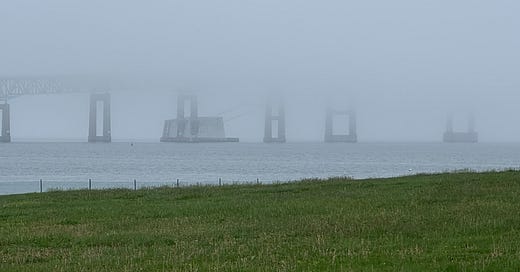This weekend is the 45th anniversary of the volcanic eruption at Mount St. Helen’s in southern Washington. It was foretold by many small earthquakes and a massive bulge in the side of the volcano. Fifty-seven people, most completely innocent by-standers, lost their lives as a result of the ash, debris, and effects this blast early on 18 May 1980. By volcanic standards, the blast was modest.
One lost was a US Geologic Service public servant, David Johnston, who predicted the damage of the impending blast would be far worse than some speculated. Johnston famously issued a cry to his regional headquarters at 0830 that sleepy morning that the side of the volcano was collapsing, setting into motion avalanches, mudslides, burning ash, and overall atmospheric chaos from which the entire atmosphere through the remainder of the year. Thousands of animals and plants died within minutes along with the humans located too close to escape the fury.
Mount St. Helen’s, like so much, was beyond the control of any of us yet our actions before and afterwards created consequences. People today visit the site with curiosity but infrequent understanding a similar eruption will repeat in the future, albeit likely well past their lifespans. Those animals and plants surprisingly began reappearing amid the deep ash within a relatively brief period of a number of years, but we take for granted that animal and vegetation come and go, don’t we?
Mount St. Helen’s is also a cautionary tale. People have forgotten the sheer magnificence of the earth’s deep forces, only to experience all-too frequent reminders of our impotence against nature in all forms. The USGS scientists learned from the eruption, creating sensors for crucial life-saving advance warning. Yet, we are sacrificing that knowledge for efficiency’s sake, disincentivizing a generation of further study. Do we think AI will tell us all we need? Perhaps.
As we reflect on the 1980 blast, we ought also consider how faith in the civic experiment we call the United States has dissipated. I find that truth as remarkable and terrifying as that Sunday morning picture of raw forces at work.
Where will we be next time, especially if it were Mount Rainier, a tsunami in San Diego, or a cat five hurricane along South Carolina’s coast? We no longer need the Weather Service or USGS to alert and advice, nor do we need FEMA to help with emergency management so things will be quite different. Not necessarily better but different.
I welcome your thoughts on this column, whether a memory of 1980 or an observation about the ground quaking below us now. I genuinely am keen to hear from you.
I appreciate your time. I thank those who are paid subscribers who facilitate this work, whether annually at $55 or monthly at $8. You provide me resources that make this possible.
Today’s photograph is a different marvel from that awesome eruption. It is the Claiborne Pell Bridge spanning Narragansett Bay, despite the mist. We are affected by things, whether or not we see them in their entirety.
Be safe and be well. FIN
Lori Grisham, “‘I am going to stay right here’. Lives lost at Mount St. Helen’s eruption”, USAToday, 19 May 2015, retrieved at https://www.usatoday.com/story/news/nation-now/2015/05/17/mount-st-helens-people-stayed/27311467/





You got my point entirely
Cliff, I most definitely agree with your anxiety about the debt!! We all will prioritize things definitely but we are NIT making headway nor are we seriously DISCUSSING those priorities. We are in a downward spiral with no bottom in sight.